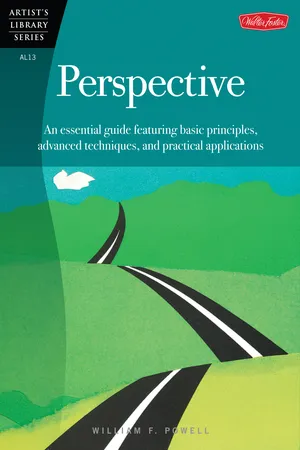
eBook - ePub
Perspective
An essential guide featuring basic principles, advanced techniques, and practical applications
- 64 pages
- English
- ePUB (mobile friendly)
- Available on iOS & Android
eBook - ePub
Perspective
An essential guide featuring basic principles, advanced techniques, and practical applications
About this book
Whether you specialize in drawing - even cartooning and animation - or prefer media such as acrylic, oil, pastel, or watercolor, a good knowledge of perspective is invaluable. It is the foundation of all great paintings and drawings, no matter what medium. Perspective shows you everything you need to know to make objects look three dimensional. Practice the methods of measuring and dividing areas proportionately; then learn how we perceive depth and distance, and how to render it correctly on paper or canvas.
You will learn the basics and beyond, covering concepts like foreshortening; cast shadows; reflections; and even one-, two-, and three-point perspective. And once you have a good grasp of the basics, it's easy to graduate to more complex and irregular forms. This comprehensive guide will show you how!
You will learn the basics and beyond, covering concepts like foreshortening; cast shadows; reflections; and even one-, two-, and three-point perspective. And once you have a good grasp of the basics, it's easy to graduate to more complex and irregular forms. This comprehensive guide will show you how!
Frequently asked questions
Yes, you can cancel anytime from the Subscription tab in your account settings on the Perlego website. Your subscription will stay active until the end of your current billing period. Learn how to cancel your subscription.
At the moment all of our mobile-responsive ePub books are available to download via the app. Most of our PDFs are also available to download and we're working on making the final remaining ones downloadable now. Learn more here.
Perlego offers two plans: Essential and Complete
- Essential is ideal for learners and professionals who enjoy exploring a wide range of subjects. Access the Essential Library with 800,000+ trusted titles and best-sellers across business, personal growth, and the humanities. Includes unlimited reading time and Standard Read Aloud voice.
- Complete: Perfect for advanced learners and researchers needing full, unrestricted access. Unlock 1.4M+ books across hundreds of subjects, including academic and specialized titles. The Complete Plan also includes advanced features like Premium Read Aloud and Research Assistant.
We are an online textbook subscription service, where you can get access to an entire online library for less than the price of a single book per month. With over 1 million books across 1000+ topics, we’ve got you covered! Learn more here.
Look out for the read-aloud symbol on your next book to see if you can listen to it. The read-aloud tool reads text aloud for you, highlighting the text as it is being read. You can pause it, speed it up and slow it down. Learn more here.
Yes! You can use the Perlego app on both iOS or Android devices to read anytime, anywhere — even offline. Perfect for commutes or when you’re on the go.
Please note we cannot support devices running on iOS 13 and Android 7 or earlier. Learn more about using the app.
Please note we cannot support devices running on iOS 13 and Android 7 or earlier. Learn more about using the app.
Yes, you can access Perspective by William F. Powell in PDF and/or ePUB format, as well as other popular books in Art & Art Techniques. We have over one million books available in our catalogue for you to explore.
Information
One-Point Perspective
There are three types of perspective that we use most: one-point, two-point, and three-point. There are, however, objects that are made up of a complex number of sides and faces. These are known as “complex forms,” and we will discuss them later.
As discussed in the previous section, lines that are parallel to one another and recede toward the horizon all meet at one point on the horizon line. This is the vanishing point, and it is used for all objects in one-point perspective. We also have one-point perspective when both the height and width of an object are parallel to the picture plane (Figure A). When an object is placed in this position it is viewed straight on. The edges of the front, top, bottom, and sides of the object are parallel to the edges of the picture plane. They have no depth; therefore, they have no lines that extend to a vanishing point (Figure A).

The surfaces of an object, such as the sides, top, and bottom, that extend into the picture, creating the illusion of depth, have extended imaginary lines that meet at the vanishing point on the horizon line. When looking at a cube straight on, we see that the edges of the top extend into the picture and meet at the vanishing point, giving the illusion of depth (Figure B). Study and practice the examples. Notice that there are a number of ways to view a simple cube in one-point perspective.

Drawing a Cube in One-Point Perspective
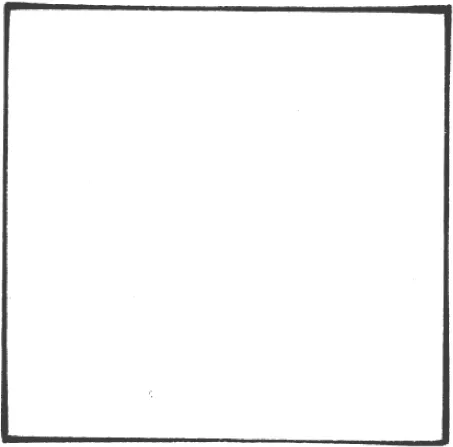
Step 1 Lightly sketch the general shape of the face of the cube.
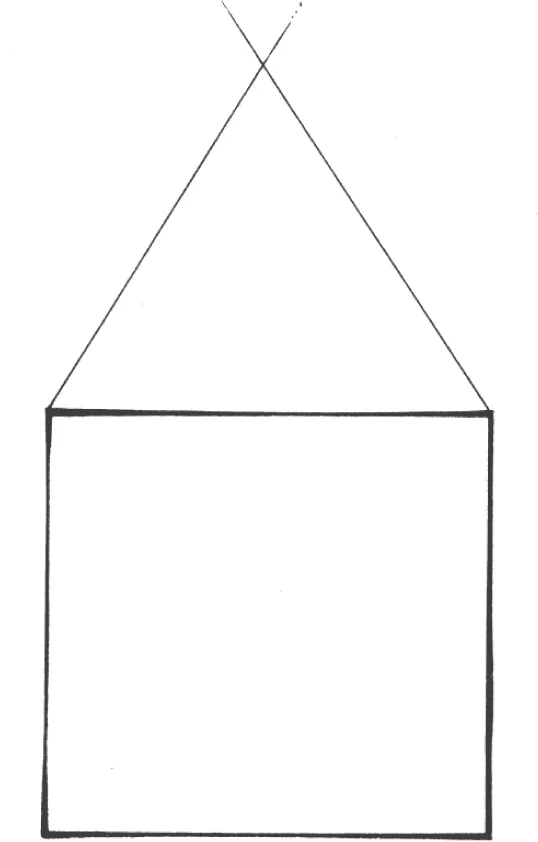
Step 2 Lightly draw the two angle lines along the top until they cross.
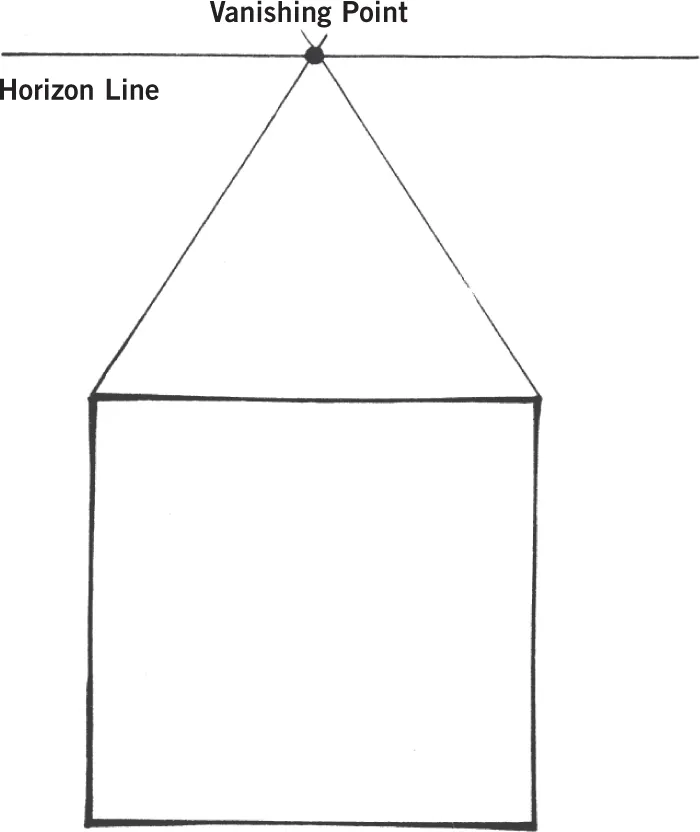
Step 3 Use the angle lines to determine the horizon line and vanishing point. At the point where they cross, draw a horizontal line parallel to the top and bottom lines of the cube. This is the horizon line. Now place a vanishing point where the lines cross.
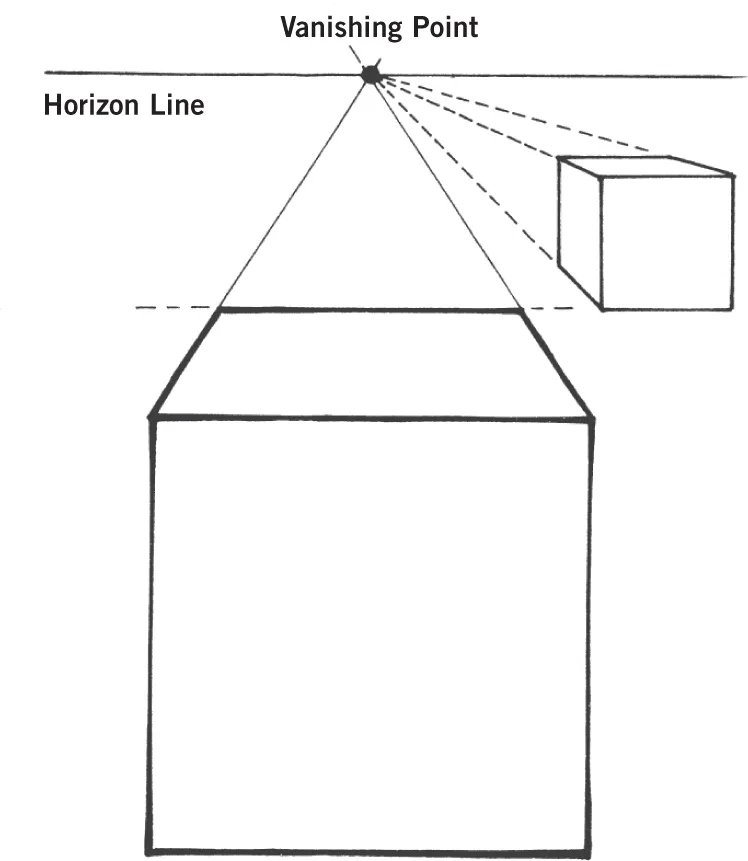
Step 4 Draw a parallel line between the horizon line and the top of the cube. This establishes the top surface of the cube. Darken the lines. Here is a cube drawn in perfect one-point perspective.
Drawing the Inside
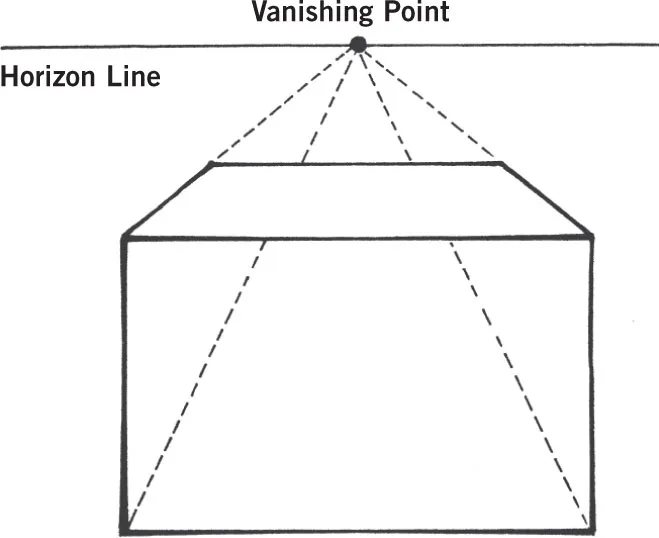
Step 1 Here is a box that will appear to be open. Draw extending lines from the left and right corners to the vanishing point to establish lines for the floor and sidewalls.

Step 2 Draw vertical lines down from the back left and right corners. The width of the back wall is now established. Darken the lines as shown—this makes the sidewalls.
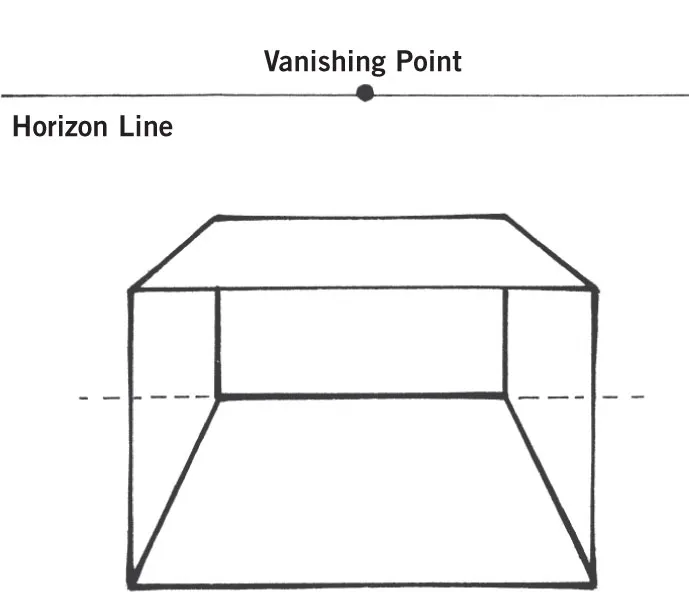
Step 3 Draw a horizontal line from the back left corner to the right one. This is the width of the back wall in true one-point perspective.
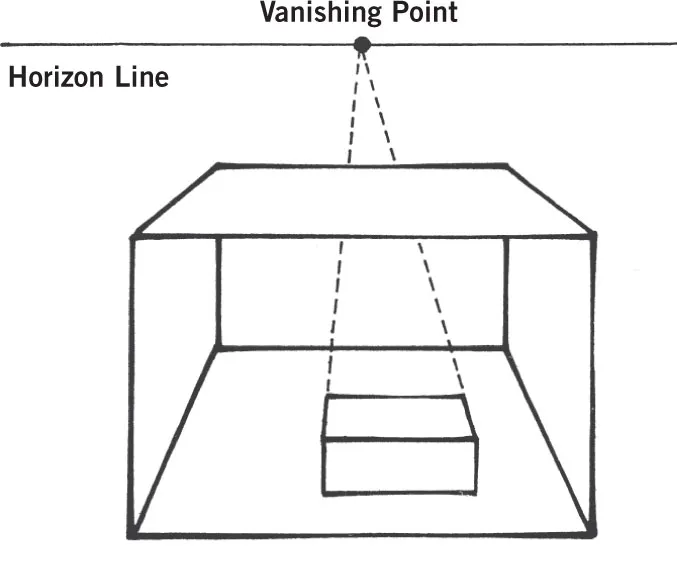
Step 4 Using the same vanishing point, place a small box on the floor of the open box. See how easy it is when using the vanishing point and the horizon line as guides?
Exercises to Practice
If we view the cube from an elevated position, the vanishing point and horizon line are below the cube. Placing it this way gives the cube the illusion of floating.
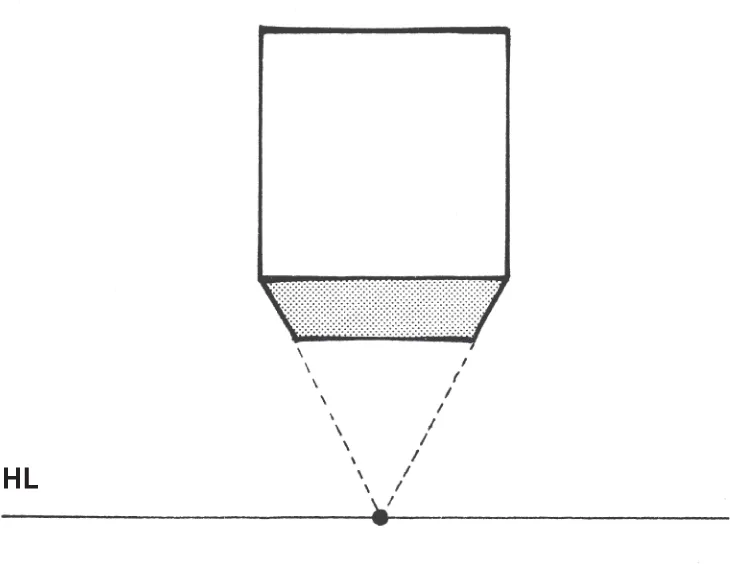

In the exercise above, a number of boxes of various sizes and positions are drawn using the same perspective point. Notice that in all cases, the height and the width of the boxes are always parallel to the picture plane.

Here is an inside view of a box when viewed straight on—t...
Table of contents
- Cover
- Title Page
- Copyright Page
- Table of Contents
- Introduction
- How to Achieve Perspective
- Perspective Terms
- Drawing a Cube in One-Point Perspective
- Exercises to Practice
- Finding the Peak & Pitch of a Roof
- Three-Point Perspective
- Drawing Ellipses
- Foreshortening
- Drawing People
- Finding the Length of a Cast Shadow
- Reflections
- Changing Planes & Directions
- Exercise to Practice
- Complex & Irregular Forms
- Exercises to Practice
- Closing Thoughts